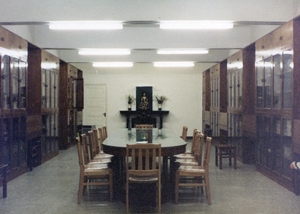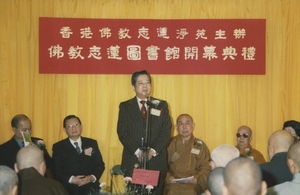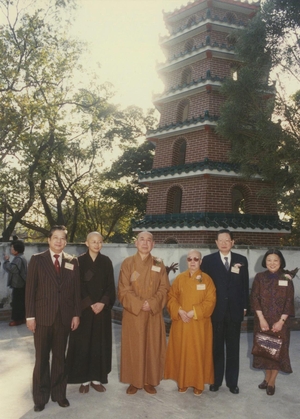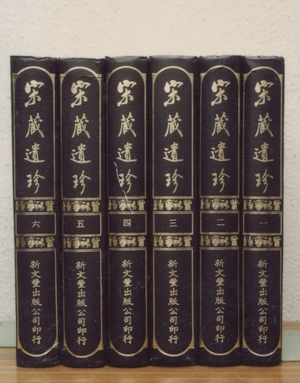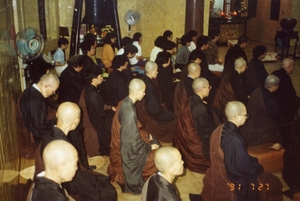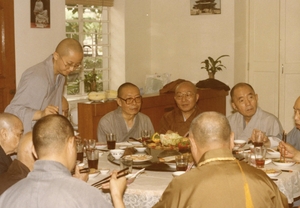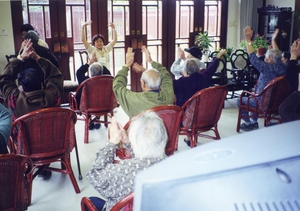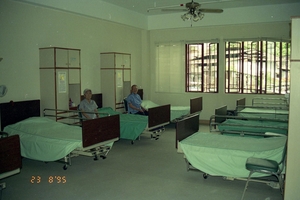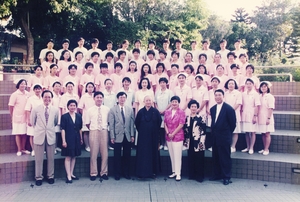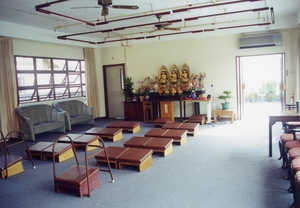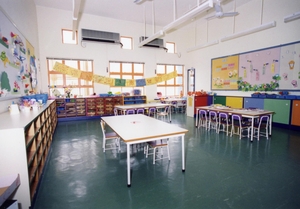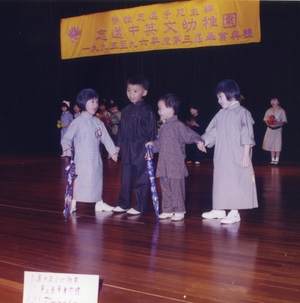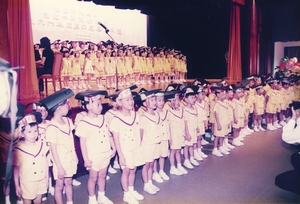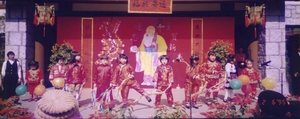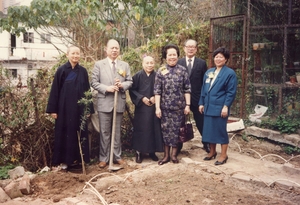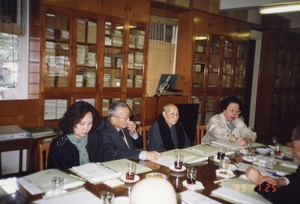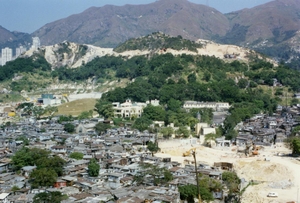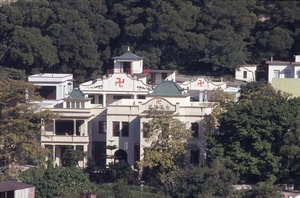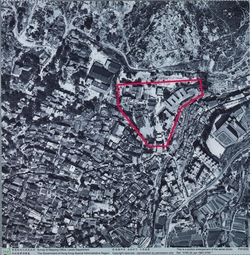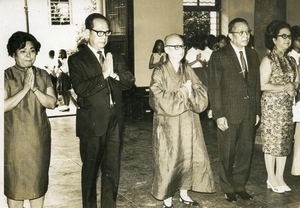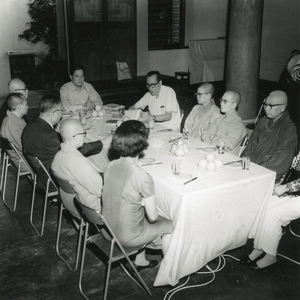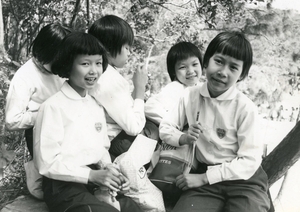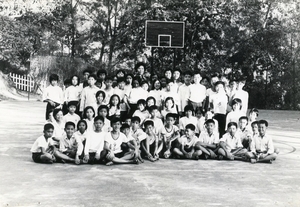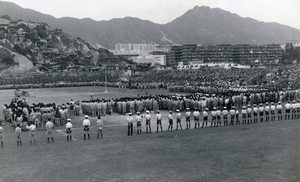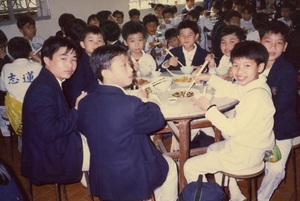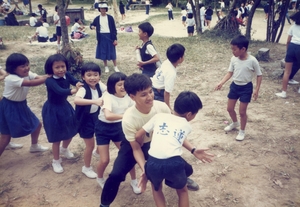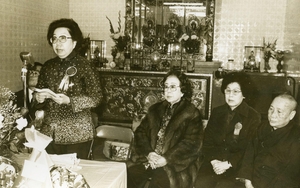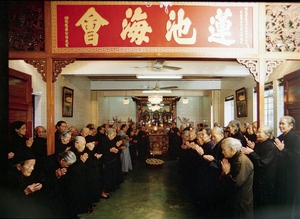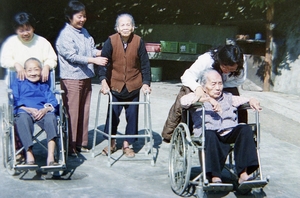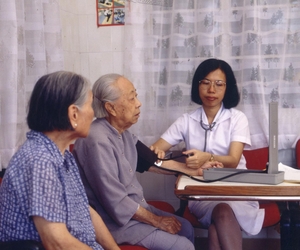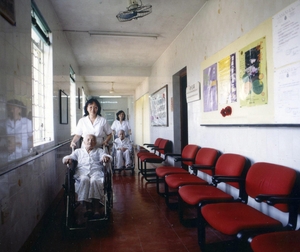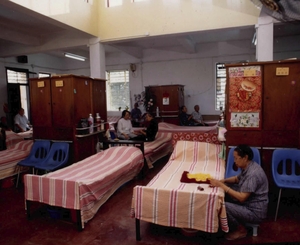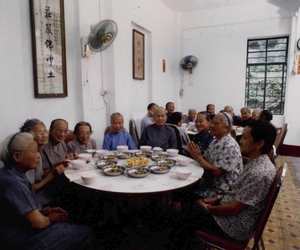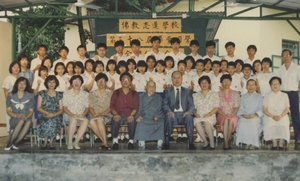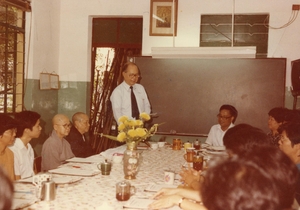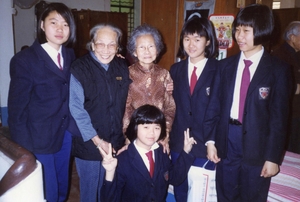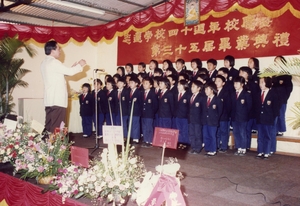Chi Lin Nunnery
Background
○ The Development of Chinese Buddhism in the late Qing Dynasty and the early Republic era.
○ The flourishing of Buddhism in Hong Kong
Hong Kong was ceded as a British colony in 1841. With western influences, it soon developed into a cosmopolitan city. The majority of its population, over 90%, was Chinese. They were accustomed to living by traditional Chinese ethics and customs. At the convergence of Chinese and western cultures, Buddhism began to flourish in Hong Kong.
In the late Qing and early Republican periods, Hong Kong was a “peaceful and tranquil haven” compared to the war-torn China. It attracted an influx of refugees from the Mainland, including some Buddhist monks. The monks, in pursuit of their religious practice, started to build cottages, plough the land and practise meditation on remote Lantau Island. There were about eighty such hermitages on Lantau Island in the early 1920s. When the second wave of the “Convert Temples to Schools Movement” broke out in China in the twenties and thirties, small and large monasteries were similarly affected. This prompted more mainlanders and monks to migrate south to Hong Kong. Among them were some highly respected and learned monks who had held important posts in Chinese temples. They began to promote the teachings of Buddha for the benefit of Hong Kong people. Subsequently, many followers became Buddhist and Buddhist establishments of various sizes were established all over the Colony. The wisdom of Buddhism that flourished in China for over a thousand years has finally proliferated in Hong Kong.
A brief history of Chi Lin Nunnery
I. Founding Period
The founders had many development plans for Chi Lin. Ven. Wai Um began by acquiring Buddhist statues, raising funds and applying for land to build a Main Hall. On 8 December 1941, Hong Kong was occupied by the Japanese and the project came to a halt.
The Japanese occupation lasted for three years and eight months. In 1941, all religious activities came to a halt. Ven. Kok Yat, Ven. Wai Um and several disciples remained in Chi Lin, fully committed to the protection of the Nunnery. Despite the hardship, they persevered in safeguarding the Buddhist establishment.
Regrettably, in 1943 Ven. Wai Um, suffering from an incurable disease at that time, died at the young age of 38. His master, Ven. Kok Yat, also passed away 4 days later at the age of 54. With the loss of two founders, Chi Lin Nunnery was left in a dilemma.
II. Transition Period
It was impossible for Chi Lin to keep out of trouble during the Japanese occupation. In February 1945, the Japanese government in Hong Kong commandeered the premises of Chi Lin and ordered all Buddhist statues and furnishings removed. Fortunately, the Fa Yun Ching She generously lent Chi Lin a building to accommodate its Buddhist statues, ritual implements and furniture. With the joint effort of Ven. Oi Ting and other Buddhist followers, Chi Lin was fortunately preserved.
In August 1945, the Japanese surrendered and World War II ended. Ven. Oi Ting resigned as abbot and Ven. Wang Chi succeeded him.
In October 1946, the monastics and the laity gathered to lay plans for the expansion of Chi Lin into a “conglin” exclusively for nuns since no such establishment existed in Hong Kong then. As all conditions were favourable, in a special committee meeting held on 2 June, 1947, it was confirmed that Chi Lin as a “conglin” would welcome nuns from all quarters. The resolution was passed unanimously at the general meeting held on 18 July, 1948. At last, the wish of Ven. Wai Um could be materialised and fulfilled.
Ⅲ. Developing Period
In the 1940s after the War, the Diamond Hill area was sparsely populated and in impoverishment. The residents were poor and many children had no schooling. The nearest schools in Kowloon City were mostly private. Public schools were far away and transportation was inconvenient. Out of compassion, Ven. Wang Chi decided to set up a charity school in Chi Lin Nunnery for the needy children in the neighbourhood.
In July, 1949, Ven. Wang Chi completed her term of office. Ven. Foon Wai who was a disciple of the prominent Ven. Hsu Yun, succeeded as the 4th Abbess of Chi Lin.
After the War, many nuns returned to Hong Kong and the residents of Chi Lin grew in number. The Nunnery was already under financial strain and expenses kept mounting. To tide over the difficulties, the nuns cultivated vegetables on lands adjacent to Chi Lin and started a towel weaving cottage industry to sustain their living.
In 1950, Chi Lin Primary School, a well-established educational institution, was approved by the Education Department to be a subsidized school.
On 27 November 1965, the overworked Ven. Foon Wai passed away due to cerebral haemorrhage at the age of 69. She had been a nun for 18 years. Her death was deeply regretted by everyone.
Ⅳ. Redevelopment Period
The founders of Chi Lin, Ven. Kok Yat and Ven. Wai Um, proposed to build a “conglin” for nuns, but the plan fell through due to the imminence of war. Throughout the development of Chi Lin, abbesses such as Ven. Foon Wai and her successors laid a sound foundation for her redevelopment. However, due to economic and social circumstances of the previous decades, Chi Lin had to focus on charity and social services instead of the construction of the monastic buildings.
The wish to build a “conglin” for the nuns was never forsaken. From the early 1980s, Chi Lin collected relevant literature and information on traditional Chinese timber monastic structures. Research was done on major reference books like the Complete Works of Mr. Liang Sicheng, the Foguang Temple in Shanxi, murals of the “Sutra Transformation” in Dunhuang Cave 172, which depicts the Pure Land and the carvings of Buddhist Halls in the Daiyan Pagoda in Xian. For more than a decade, numerous site visits were conducted, and photographs of famous monasteries and Buddhist caves in China were taken and extensive travels to monasteries in Japan that were built in the Tang period were made. Concurrently, research on the furnishings and ornaments of Buddhist temples was carried out and Buddhist ritual implements were studied and collected. They included frescoes of “sutras transformation”, Buddhist statues, altar and canopies for the statues, banners, embroidered and woven ornaments, furniture, offerings and dharma implements.
The reconstruction of Chi Lin was a highly complex and challenging project, unprecedented in Hong Kong and China. The mastermind behind it was Ven. Wang Fun, who has participated in the redevelopment of the Guangxiao Temple in Guangzhou and the Biechuan Chan Temple in Danxia Mountain, Guangdong Province, both in their design and construction stages. She also designed and worked hard in the reconstruction of the Kwun Yum Temple on Lantau Island and the Lian Shan Shuang Lin Monastery in Singapore. Furthermore, she was appointed artistic director of the Tian Tan Buddha project of the Po Lin Monastery on Lantau Island and was involved in its complete construction process. The completed Tian Tan Buddha statue has become a world-famous Hong Kong landmark. Ven. Wang Fun has been able to turn her years of research in Chinese architecture and Buddhist art into fruition. Her previous years of accumulated experience in all aspects of Buddhist arts and architecture was crucial to the redevelopment of Chi Lin.
Phase 2 consisted mainly of the building of the living quarters for the nuns, which was completed in 1996.
Phase 3 involved the construction of the Tang style timber monastic buildings, which was completed in 1997, the year of Hong Kong’s return to China.
Chi Lin took a bold opportunity before the handover of Hong Kong, and turned aspiration into reality. With the Foundation Stone Laying Ceremony of Phase 3 held in early 1994, the construction of the Tang style timber monastic complex officially commenced. Despite the absence of a precedent, Chinese, Hong Kong and Japanese architectural experts collaborated to complete the general plan and construction designs of the monastic complex, in accordance with the Yingzao Fashi (State Building Standards of the Song Dynasty) by Li Jie. Construction plans were then submitted to the Government and eventually passed the strict modern technical standards of the United Kingdom. High-quality timber, stones and tiles were procured. A team of skilled and experienced craftsmen of classical timber structures was employed and experts from the Wuhan Technical University of Surveying and Mapping were commissioned to monitor the project closely. Data on the timber components were then fed into the computer for a pre-assembly to ensure accuracy and precision of the actual construction.




















